How to Write a Play: Step-by-Step Guide 2025
Learn how to write a play with our 2025 step-by-step guide for students. Master playwriting structure, dialogue, and tips for academic success.
The attention of your audience is of the most significant importance because, whether you are presenting a speech or writing an essay, attention is most crucial, and getting attention getter examples will offer you more help. And by far, you have one shot at making a good first impression so that the listeners or readers are forced to get to your message. This can be achieved by the use of a powerful attention getter, also referred to as a hook. It creates the mood, invokes interest, and shows that what is about to follow is something that is worth their attention. Unless one develops a proper hook, even the most research-based and deep insights could be missed. This is not only a formality; it is a strategic method of immersing your audience into your world and making them ready to accept what you tell them.
Understanding what is an attention getter is the prime question that must have arisen, and is essential to comprehend for an impressive speech. A hook, which is also referred to as an attention getter, is the intro of a speech or essay, which can instantly interest your audience. It is aimed at ensuring that they feel like listening or reading more. Here, this impression is very important as it forms a tone and indicates the worth of your content. Good hooks may be unusual facts, provocative questions, brief stories, descriptive narratives, or persuasive quotes.
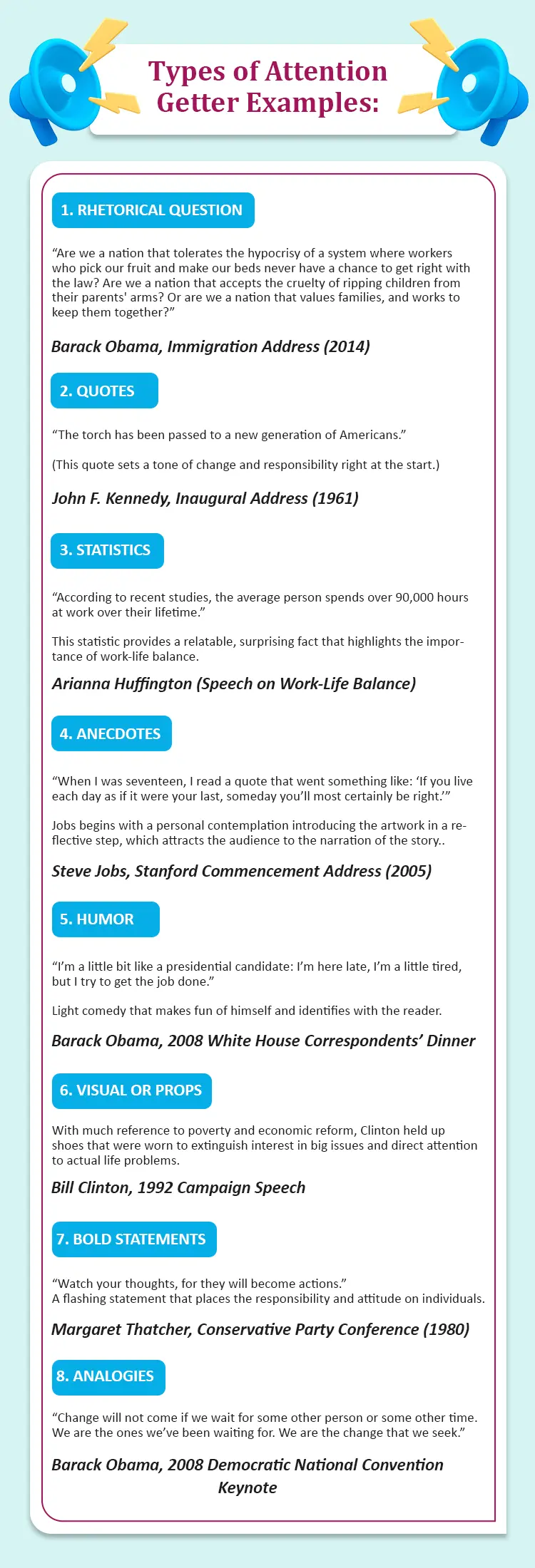
Whenever you begin a presentation, speech, or even a conversation, it is of great importance to attract the attention of your audience. A good attention getter makes your listeners hooked to you from the first moment, and they are willing to listen to what you have to say. There are several types of attention getters that are discussed further:
Rhetorical questions can be very useful attention getters since they capture the minds of the listeners right away without asking them to answer your question. Asking a question that forces people to listen to your topic or makes them think critically about your subject will make them share the same intellectual realm. The thing is that this method is based on building an interest and collective investigation that will predispose your audience to the information you convey.
| Examples 1. Blood, Toil, Tears, and Sweat by Winston Churchill (1940) “What is our policy? I will say: It is to wage war, by sea, land and air, with all our might...” 2. Malala Yousafzai, Nobel Peace Prize Speech (2014) “How dare the Taliban take away my basic right to education?” 3. Nelson Mandela, Inaugural Speech (1994) “What counts in life is not the mere fact that we have lived. It is what difference we have made to the lives of others.” |
You can begin with an effective quote so as to give credence and weight to what you are saying right now in your speech or your essay. The epigraph will not be an improvised, thrown-together quotation, but it will follow a quote of some respected authority, or some historical person, or even a popular culture allusion, and it can be quite a way towards a thoughtful or productive tone. What matters is that a person should select a quote that will be near their topic and one that is capable of being memorized.
| Examples 1. “The only thing we have to fear is fear itself.” A memorable line that addresses national anxiety and instills courage. Franklin D. Roosevelt, First Inaugural Address (1933) 2. “There is not a liberal America and a conservative America—there is the United States of America.”
Barack Obama, 2004 Democratic National Convention Keynote 3. “One child, one teacher, one book, one pen can change the world.” (This powerful quote highlights the impact of education at the outset.) Malala Yousafzai, Nobel Peace Prize Speech (2014) 4. “Four score and seven years ago, our fathers brought forth on this continent...” (A historic and evocative opening that draws listeners into reflection.) Abraham Lincoln, Gettysburg Address (1863) |
The use of statistics makes an absolutely great attention-grabbing effect as they are hard facts, and typically, a shocking or astonishing statistic can instantly startle or trouble your crowd. An eye-catching fact can illustrate the magnitude or the importance of a problem and make your topic more pertinent and meaningful. In applying statistics, they should be honest, testable, and straightforward.
| Examples
“Imagine a world without disease, where no child has to suffer from preventable illnesses.” (paired with data) Though partly an image opener, Gates often paired vision with facts to emphasize the scope of health challenges.
“Did you know that more than 32% of all births in the U.S. are delivered by Cesarean section?” Using a statistical fact immediately focuses the audience's attention on the topic’s relevance and impact.
He starts with compelling data visualizations debunking common misconceptions, such as child mortality and income levels, making statistics vivid and engaging from the start. |
Relevant stories, or mini stories, called anecdotes as well, can be short and personal stories with which you can immediately get in touch with your audience emotionally. By using a familiar experience, yours or another one, you neutralize your subject and get it close to other people. Anecdotes are those stories that contain the inner interest of listeners or readers, making them wonder what would come next.
| Examples
“I remember the long days of knocking on doors, the conversations with families facing real struggles, and the hope I saw in their eyes...” Obama shares an image with the audience to connect with them on a personal level.
“Twenty-five years ago, I was in a television studio, scared and uncertain about my future. Today, I stand here filled with hope and gratitude.” Through her experience, Oprah creates a rapport and inspires.
“I come from a university town in Eastern Nigeria — a place where everyone has a story to tell.” She begins with a setting-related anecdote that throws the audience right into it.
“When I think about the America I want for my daughters, I carry with me the story of a small town girl who dared to dream big.” Due to being personal yet universal, this story creates an emotional bond. |
When appropriately used, humor as an attention getter can be just the right thing to break the ice, lighten the mood, and make the audience friendlier to listen to. The right time, right place, and right kind and suitability of joke and witticism can break the ice and show your character. Yet, humor is a matter of taste; therefore, it is important that you understand your audience and that your humor be inclusive, thus not putting off your message. An example is a light, self-deprecating joke prior to a serious discussion, so that the tension is off and the audience is in a relaxed mood to accept whatever you say, which is to follow and is more serious.
| Examples
“When I was your age, I was afraid of what people thought of me. Now, I’m afraid of what I think of myself.” Nice rapport-building self-deprecating quip that right away puts the audience at ease.
“I really believe that it’s a great thing to be a young person right now. That’s not because of technology or anything like that, but because you have the advantage of having made mistakes on MySpace.” A subtle cultural reference that is eye-catching in its humor.
“I’m so pleased to be at a ceremony honoring me that I’ve named it after myself. A witty, maybe slightly twisted joke that gets laughs and drops guard.
“There are these two young fish swimming along, and an older fish approaches and says, ‘Morning, boys, how’s the water?’ And the two young fish swim on for a bit, and then one turns to the other and goes, ‘What the hell is water?’” This anecdote humorously sets the tone of the story, though it is humorous and thought-provoking.
“I asked Bill if he wanted to introduce me, and he said, ‘You know what? I think you’re going to do fine on your own. You don’t really need me, and if you do, I’m here after the speech.’” A humorous personal detail to bring the speaker down to a human level. |
With speeches and presentations, using a visual aid or a prop can be an excellent attention getter. This way attracts the visual aspect of the audience to the play right away and can burn a place in memory. A visual element, whether it is a powerful picture, an applicable item, or a brief video clip, can arouse interest and create a scene about the theme you will be discussing, which words alone may not be able to do effectively. As an illustration, when pointing to a single piece of plastic waste and talking about the pollution of the ocean, it will be a great way to impress your audience.
| Examples
|
A bold statement is simply an explicit, confident declaration that instantly attracts attention, either by the confident attitude or the shocking statement. Such attention-getters function in one of the following ways: by contradicting assumptions or stating a formidable truth, which causes the audience to stand up and take note. It may be especially successful when it comes to persuasive speech or the argumentative essay.
| Examples
“We shall never surrender.”
“This great nation will endure as it has endured, will revive and will prosper.”
“Let every nation know, whether it wishes us well or ill, that we shall pay any price, bear any burden…”
“Change will not come if we wait for some other person or some other time.”
“One child, one teacher, one book, and one pen can change the world.”
“It is not the critic who counts…”
|
There is no better attention-getting device than analogies because analogies, the unknown and complicated subject, are related to something your audience is familiar with. With a definite comparison, you make your subject more accessible and closer to a reader in the first place. This method assists in overcoming the knowledge gap and establishes a basis for further learning.
| Examples
“To each, we will give a place, to each a role in the great struggle for survival. We are like a ship navigating stormy seas, but if we unite, we can reach safe harbor.”
“You can’t connect the dots looking forward; you can only connect them looking backwards. It’s like trying to make sense of a puzzle when you only have some of the pieces.”
“We will not be satisfied until justice rolls down like waters and righteousness like a mighty stream.”
“The torch has been passed to a new generation of Americans.” |
Learning about the different kinds of attention getters and learning how they are used by attention getter examples for speeches, with different concrete examples, can be a great way to start learning. These examples thereby illustrate that examples give practical illustrations, as they will make abstract ideas more practical and demonstrate how you can utilize these methods in your speech.
An informative speech is used to inform an audience on a specific subject, and no persuasion is employed. Instead, the information is presented clearly and concisely. Effective development of such speech will require prior knowledge, research, and preparation on the topic. Here are some examples of different attention getters in an informative speech:
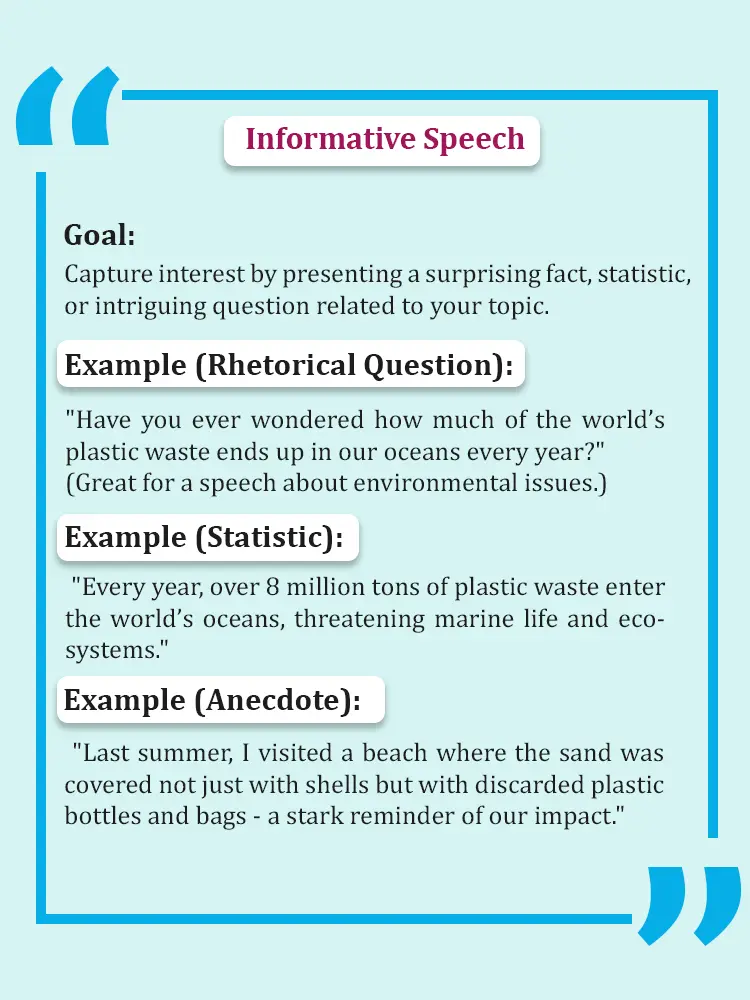
The examples of informative speech show how to use attention getters effectively. A rhetorical question instantly engaged the readers in the subject. A powerful statistic is a measurable data that is strong. Anecdotally, an employee would be able to relate to the topic, and the information would be closer and more identifiable with the listener. These techniques have proved to be effective in curiosity but not persuasive.
The purpose of a persuasive speech is to change the minds of your audience so that they can be in agreement with your opinion, or act, or modify what they believe in. It needs a set of convincing arguments, solid evidence, and the view of the listener. The following are some of the examples of attention getters in a persuasive speech:
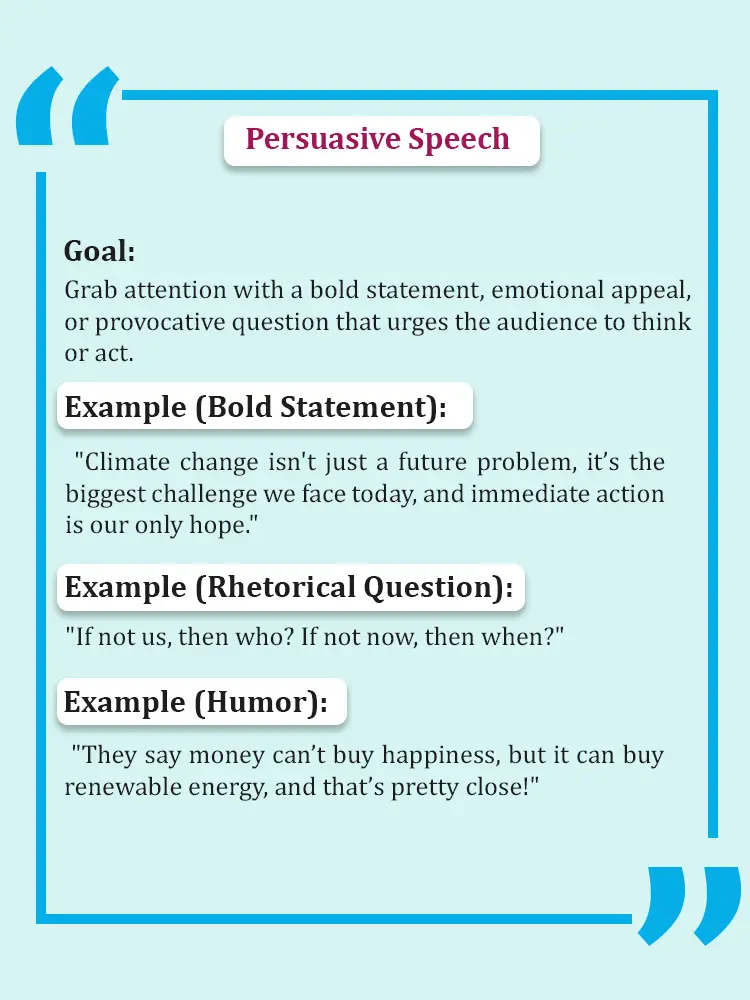
Self-introduction speech is a chance to introduce yourself to a group of people as part of a class, after securing employment, or at a gathering. It is not only about your name; it is your chance to reveal your personality, experiences, and things that are unique about you:
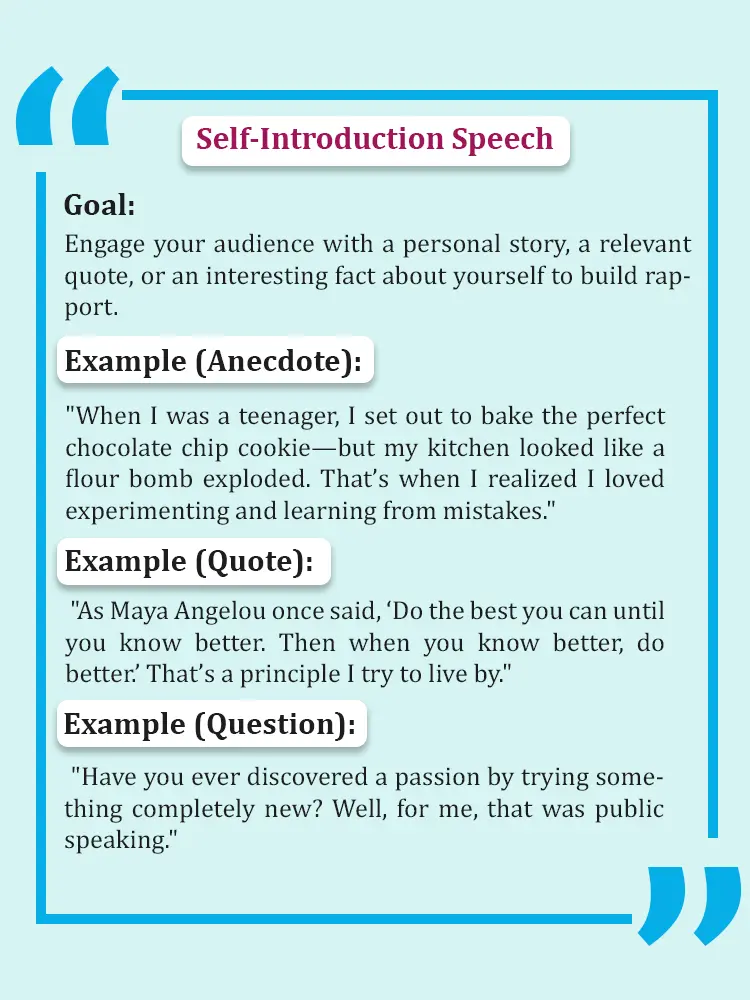
Self-Introduction Speech Analysis:
The examples are effective, and they have shown how to personalize a self-introduction. Personality and a growth mindset show themselves through an anecdote such as the cookie story. A quote from one of the notable figures is reflective of personal values, and a rhetorical question directly involves the audience. Both techniques can establish an instant rapport through telling stories.
A classroom speech is a typical practice used to assist students in forming their skills in public speaking, along with the capability of research and confidence. These speeches include making or giving information, giving an experience or argument on a topic of a certain subject in an academic setting:
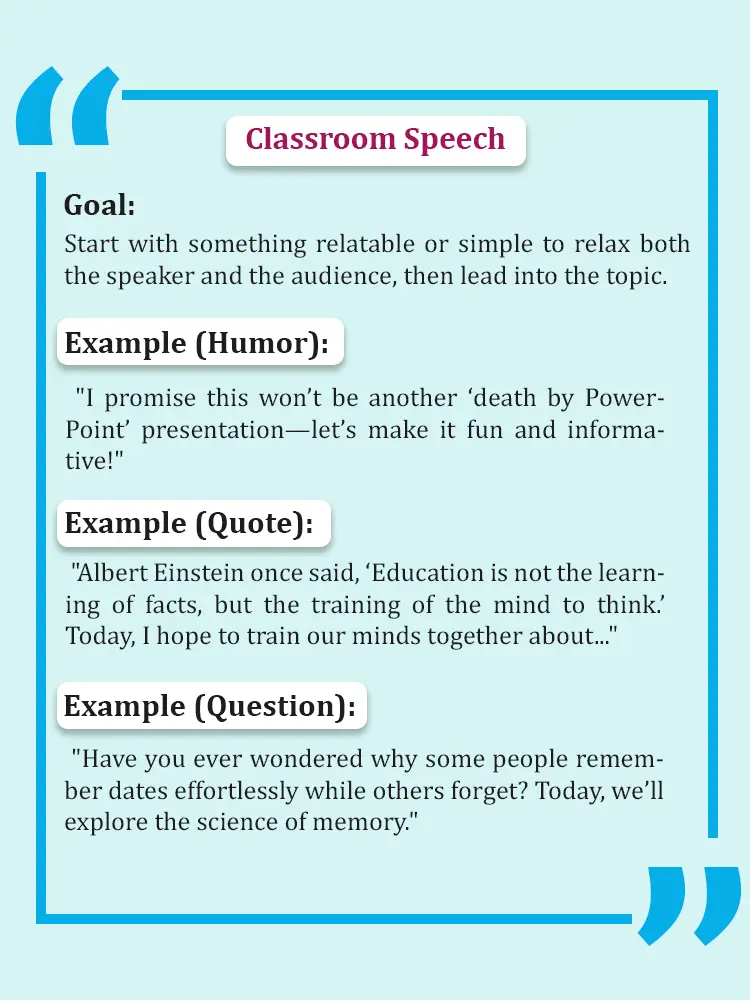
Classroom Speech Analysis:
The given examples illustrate the ways of opening a classroom speech successfully by making a rapport and jumping into the subject halfway. A quote will add a sense of authority and make someone ponder, whilst humor will put the listener at ease, making it impossible to continue listening commercially. A direct question gets the attention of listeners and interests them. Both tactics help to calm the speaker and the listeners, establishing a welcome mood that flows easily into the speech topic itself, creating memories in the minds of the listeners, and proving the speech to be much more influential.
You need an excellent attention getter to engage readers in your essay right from the first sentence. At the end of the day, you may have an ulterior motive to elicit a thought response, develop an emotion, or stimulate curiosity, but it all starts with the opening lines. To be able to study the types of attention getters and learn how they are used by using specific attention getter examples for essays will help you a great deal in your writing skills. Popular and engaging attention getters, which you can use to make your essays unique, are provided below.
A narrative essay is a story, usually a personal story, about a point or lesson. It is full of vivid details, rich descriptions, and a clearly defined plot consisting of introduction, body, and conclusion as the means of appealing to the reader. The point is to present experience, emotion, or insight such that the reader comes to the sensations that they were there.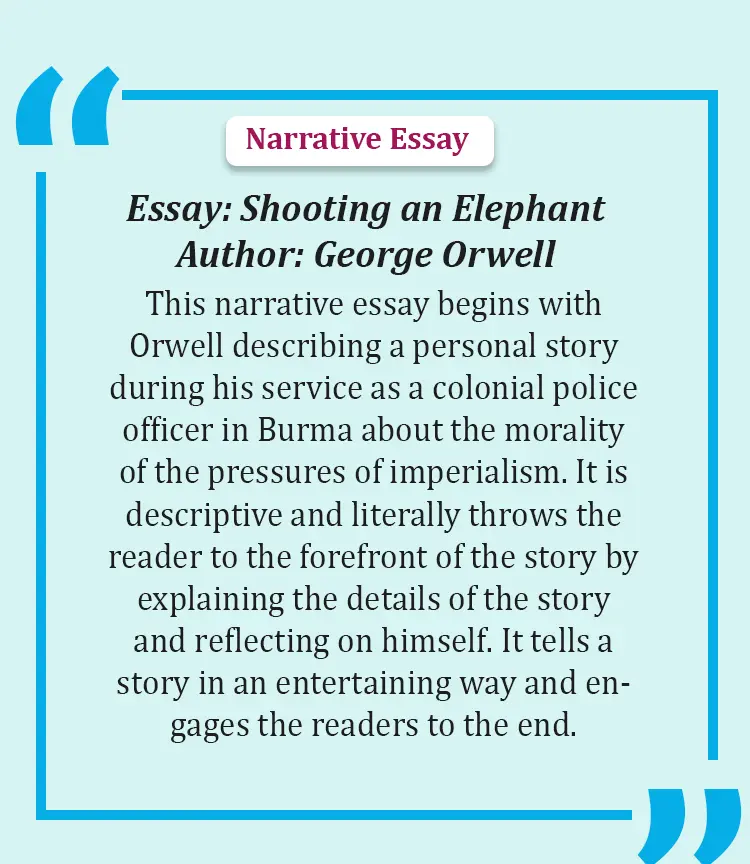
An argumentative essay is an essay that gives a definite position on an area of controversy with a view to convincing the reader to follow that position. It makes its argument on rational grounds, having the endorsement of reputable evidence and attention getter speech examples. The good argumentative paper also offers recognition and disproof of counter-arguments, so that it shows that it understands the topic well and entrenches its stand.
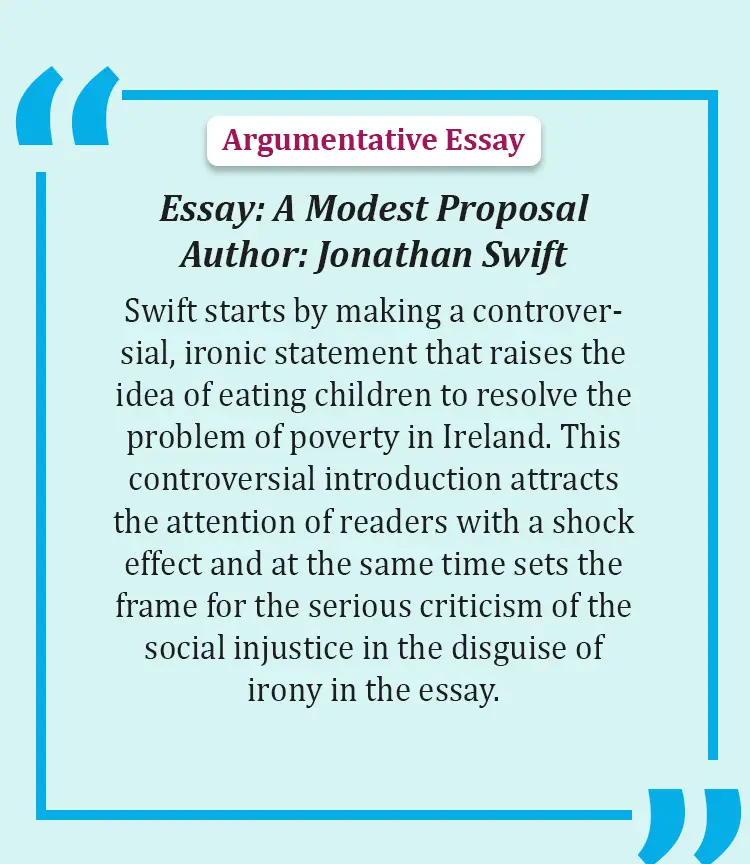
A research paper is a longer scholarly study that examines a certain issue, making an original argument, examining, or explaining it. It comprises massive research, building on available scholarship, and backing claims with legitimate evidence. The paper seeks to add some new information to a specific sphere of knowledge or create a new opinion on it.
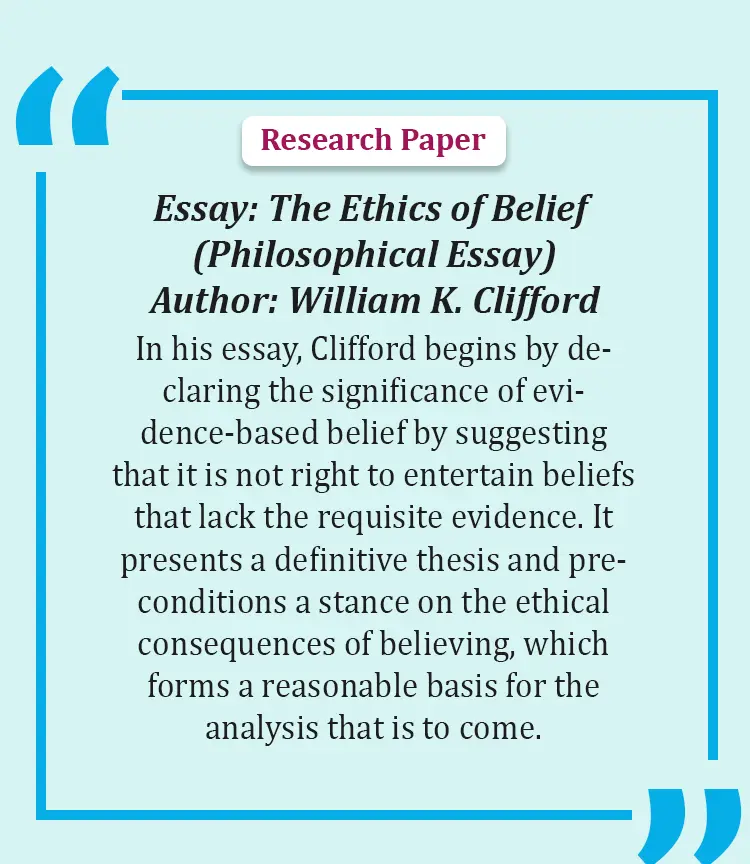
The beginning of your speech is the first impression you impose on the audience, and the attention getter speech examples are a helpful source. If you fail to create an impression in the beginning, the audience will lose interest and their attention will be lost for the rest of the speech. Therefore, here are the tips you must consider:
There are some mistakes that speakers generally make which decrease the quality of the speech, and these mistakes are:
The development of powerful attention getters can be polished by making use of a variety of resources. Get consultation from professors or writing center tutors who provide professional advice and comments. Get new ideas through brainstorming with friends or peers. Compile interesting facts, quotations, or historical events in libraries and electronic databases. TED talks can also be a great source of attention getter examples for essays or speeches. Learn the techniques by studying essays or speeches given by well-accepted writers and speakers. Special and pertinent hooks can be initiated by news headlines, documentaries, and personal experience.
Attention getters play a very crucial role in any successful communication, both in speeches and essays. They are your initial opportunity to evoke curiosity, form relevance, and wean your audience to embrace what you are saying. In making the right decisions and evading the typical traps, you might be able to make your start rousing, unforgettable, and what determines success.
An attention getter is a statement that starts a speech or essay and is used to hook the audience straight away. It is mainly used to attract the listener or the reader, creating in them a feeling of curiosity and desire to hear/read on the following input or argument.
With informative speeches, curiosity is aroused through powerful attention getters. Good alternatives are some startling statistics about your issue, an interesting stemming question that will be answered in your speech, a brief and applicable anecdote that demonstrates your point, or a provocative fact that pulls back on some common myths. It is to have your audience want to learn more on the spot.
In order to be able to write a good attention getter for a speech, get to the attention getter examples for informative speech, and begin with something that will simply invoke interest. This could be an effective rhetorical question, an astonishing statistic, a relatable anecdote, a firm quote, something humorous, or even a visual prop. This is done to capture your listeners right away so that they can eagerly want to hear more.
Yes, attention getters, or most commonly called “hooks” in essay writing, are very important in capturing the attention of your reader in the first line. And they are equally necessary and similarly arouse interest to keep reading the text out, like in a speech. Such methods and means as rhetorical questions, astonishing statistics, anecdotes, or strong quotes are remarkably well written.
Subscribe now!
To our newsletter for latest and best offers